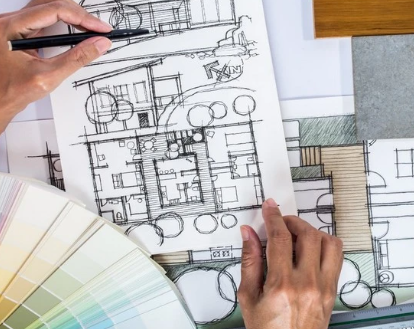Interior Design Courses provide essential skills to launch your career, learning space planning, color theory, and decoration techniques efficiently.
Basics Covered in Interior Design Courses
An interior design course explores elements like color theory and spatial harmony. Students learn how hues affect mood in rooms. Programs introduce drafting basics, using sketches to plan layouts. You study ergonomics, which focuses on human comfort in furniture placement. These courses use mood boards to visualize concepts. Instructors explain texture contrasts for depth in designs. This builds awareness of scale and proportion in environments. Graduates grasp sustainable materials, like recycled fabrics for eco-friendly choices. Such foundations help create functional homes or offices. The approach encourages experimenting with light sources for ambiance.
Core Skills Built Through Interior Design Courses
In an interior design course, you develop rendering techniques with software like AutoCAD. This tool aids precise floor plans. Training covers client consultation, gathering needs for custom solutions. You practice material selection, balancing aesthetics with durability. Courses include presentation skills, using portfolios to showcase ideas. These elements sharpen problem-solving for awkward spaces. By working on mock projects, you refine budgeting awareness without excess. This prepares for real collaborations. The skills support adapting designs to cultural preferences.
Adaptable Format of Interior Design Courses
An interior design course often runs online or in hybrid modes for ease. Access videos on pattern repetition at your pace. Forums let you share feedback on elevation drawings. This connects learners across areas. Support covers software setup for seamless use. Tasks involve critiquing historical styles like mid-century modern. These build critique abilities. The setup works for those with day jobs in related fields. It promotes time management in creative pursuits.
Main Topics in Interior Design Courses
The interior design course curriculum blends history and practice. Units address residential planning, from kitchens to bedrooms. You explore commercial spaces, like retail flow for customer ease. Electives touch universal design for accessibility. Labs teach fabric swatches and finish samples. Ethics lessons stress safety codes in builds. Specialists discuss trends in biophilic elements, like plants for wellness. Culminating assignments create full-room proposals. This scope meets standards for entry-level work. It fosters versatile thinking.
Entry Points from Interior Design Courses
Finishing an interior design course leads to junior designer roles. You might assist in showrooms, arranging displays. Positions in firms handle residential tweaks. Some enter hospitality, outfitting hotel lobbies. Freelance starts with small client gigs. Associations offer volunteer setups for portfolios. Peers from classes share leads on openings. Field exposure varies designs. This base aids steady involvement in the trade.
Hurdles in Taking Interior Design Courses
An interior design course requires handling critique on visuals. Self-pacing can lag without routines. Software learning curves demand practice sessions. Group critiques need clear communication online. Content on historical revivals tests recall. Balance comes from short daily sketches. Tutors provide paths for stuck points. Virtual tours build site visit habits. Noting these aids smoother flow.
Ways to Advance in Interior Design Courses
For an interior design course, sketch daily to boost ideas. This hones line work in perspectives. Review peers’ work for fresh angles on motifs. Organize notes on lighting layers. Join virtual critiques for input on schemes. Rest eyes from screens with outdoor views. Revise drafts using tutor notes on symmetry. Browse journals on adaptive reuse. These routines deepen grasp.
Value Beyond Basics in Interior Design Courses
An interior design course widens views on wellness spaces. It covers acoustics for quiet zones. Training in adaptive interiors suits changing needs. Global styles inform multicultural projects. Blended methods mix vintage with modern. This range fits team environments. Updates via newsletters keep ideas current. Users often adapt skills to personal homes. The insight aids community spaces.
Links Formed in Interior Design Courses
Ties in an interior design course grow through shared boards. Kickoff chats meet group members. Threads debate feng shui flows. Guides review concept boards. Panels cover smart home integrations. Teams build vignette models. These mimic studio teamwork. Circles help with palette dilemmas. They lead to co-projects down lines.
Shifts Ahead for Interior Design Courses
An interior design course now weaves VR for walkthroughs. Tech like BIM models 3D accuracy. Focus grows on regenerative materials. Lessons include climate-responsive layouts. Platforms refresh on inclusive ramps. This matches field changes. It readies for remote client meets.
To wrap up, an interior design course gives clear steps into space crafting. It pairs theory with hands-on, suiting career beginnings. Effort shapes thoughtful environments.




